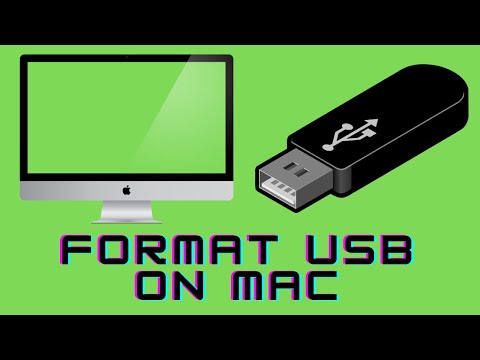Connie Yang is the primary columnist in the computer field at iBoysoft. She is enthusiastic about sharing tech tutorials on data recovery and operating system-related problems resolution. Over the years, Connie has published many computer-related guides and introductory articles.
Formatting a USB Drive on Mac Using Disk Utility Timestamped
1. 00:00 🔌 Format a USB on a Mac by selecting "show these items on the desktop" in Finder preferences to see connected drives, then right-clicking on the USB drive in Disk Utility and selecting "Erase".
2. 00:55 💻 Untick external disks and hard disks to easily access plugged-in devices by double-clicking.
3. 01:11 💻 Format USB stick to exFAT for Mac use, not FAT32 for PC.
4. 01:45 💻 Click on the Launchpad, select Disk Utility, and find the external drive to format it to Mac OS X journaled.
5. 02:19 💻 Make sure to eject any important external drives before formatting to avoid accidentally erasing important data.
6. 03:08 💻 Format a USB on a Mac to FAT32 by selecting MS-DOS (FAT), naming it, and formatting it.
7. 03:31 💻 Select format, choose exfat MS-DOS (FAT) or Mac OS Extended (Journaled), click Erase to format USB on Mac, and check info to confirm.
8. 04:34 💻 Format a USB on Mac to NTFS by booting up your Mac and using third-party software like iBoysoft NTFS for Mac, for other file systems use the Disk Utility on the Mac.
Formatting a USB Drive on Mac Using Disk Utility Video Summary
The video demonstrates how to format a USB drive on a Mac, emphasizing the ease of the process and explaining the steps involved.
The speaker explains how to display external drives in the Finder app and on the desktop for easy access.
They demonstrate identifying the file system format of a USB drive by right-clicking and selecting "Get Info."
The speaker emphasizes the importance of selecting the appropriate file system format based on the intended use of the USB drive. This is a tutorial on how to format a USB flash drive on a Mac using Disk Utility.
Accessing Disk Utility through Launchpad and identifying the external drive to be formatted.
Caution to avoid accidentally erasing important data by ejecting other drives before formatting.
Demonstrating the process of formatting the USB drive and assigning a new name. The video demonstrates how to format a USB on a Mac using Disk Utility, highlighting the process and available format options.
Demonstrates selecting the format options, including exFAT, MS-DOS (FAT), Mac OS Extended (Journaled), and others.
Shows the process of formatting the USB drive using Disk Utility, explaining that it may take longer depending on the disk size.
Mentions that for formatting drive to NTFS on Mac, a separate video is available, as it requires a more complex process involving Windows installation or third-party software like iBoysoft NTFS for Mac.
FAQs about formatting a USB drive on Mac using Disk Utility
- QHow to format USB on Mac for Windows?
-
A
You can format your USB drive on your Mac to MS-DOS (FAT) or ExFAT for Windows. If you pursue faster data transferring speed for the USB drive, you can also use a third-party tool like iBoysoft NTFS for Mac to enable formatting USB to NTFS on your Mac.
- QHow to format USB on Mac to FAT32?
-
A
Go to Disk Utility, select your USB and click Erase. From the drop-down menu of format, select MS-DOS (FAT).
- QWhat is the best format for USB drive on Mac?
-
A
If you only use the USB drive on Mac, the best format for the USB drive is APFS. If you use the USB on both Windows and macOS, exFAT is the best format. If you want your USB drive to store and transfer data faster, format it to NTFS on your Mac with iBoysoft NTFS for Mac. You can use the NTFS USB drive on both Windows and macOS relay on the NTFS for Mac tool.
You can format your USB drive on your Mac to MS-DOS (FAT) or ExFAT for Windows. If you pursue faster data transferring speed for the USB drive, you can also use a third-party tool like iBoysoft NTFS for Mac to enable formatting USB to NTFS on your Mac.
Go to Disk Utility, select your USB and click Erase. From the drop-down menu of format, select MS-DOS (FAT).
If you only use the USB drive on Mac, the best format for the USB drive is APFS. If you use the USB on both Windows and macOS, exFAT is the best format. If you want your USB drive to store and transfer data faster, format it to NTFS on your Mac with iBoysoft NTFS for Mac. You can use the NTFS USB drive on both Windows and macOS relay on the NTFS for Mac tool.


